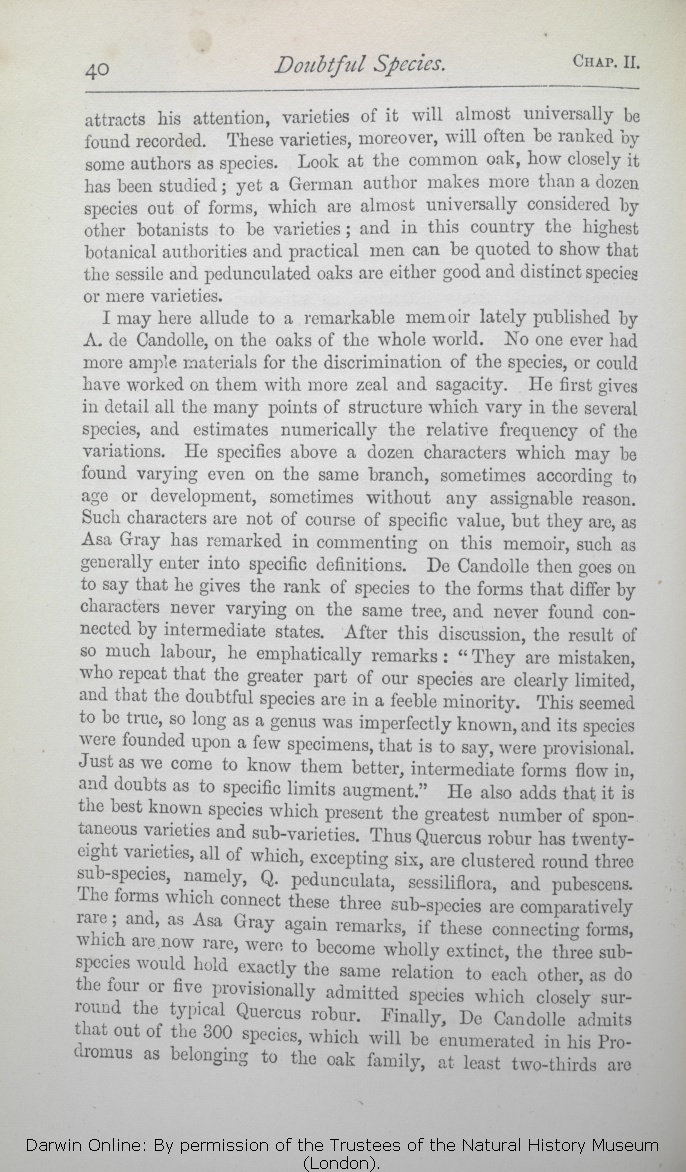attracts | attracts 1872 | | attract 1866 1869 |
| by other botanists to be 1872 |
| as 1866 1869 |
| 4 blocks not present in 1866 1869 1872; present in 1859 1860 1861 | | I will here give only a single instance,— the well-known one of the primrose and cowslip, or Primula veris
and elatior.
These plants differ considerably in appearance; they have a different flavour
and emit a different odour; they flower at slightly different periods; they grow in somewhat different stations; they ascend mountains to different heights; they have different geographical ranges; and lastly, according to very numerous experiments made during several years by that most careful observer Gärtner, they can be crossed only with much difficulty.
We could hardly wish for better evidence of the two forms being specifically distinct.
On the other hand, they are united by many intermediate links, and it is very doubtful whether these links are hybrids; and there is, as it seems to me, an overwhelming
amount of experimental evidence, showing that they descend from common parents, and consequently must be ranked as varieties.
|
|
I may here allude to a remarkable memoir lately published by A. de Candolle, on the oaks of the whole world. No one ever had more ample materials for the discrimination of the species, or could have worked on them with more zeal and sagacity. He first gives in detail all the many points of structure which vary in the
several species, | several species, 1872 | | species, 1866 1869 |
| are not of course of 1872 |
| of course are not of 1866 1869 |
| again remarks, 1872 | | remarks, 1866 1869 |
| wholly extinct, 1869 1872 | | extinct, 1866 |
|









